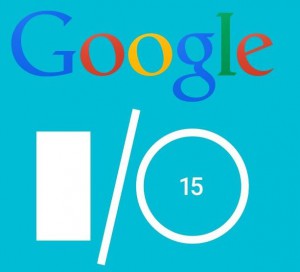Share This
Related Posts
Tags
Google I/O 2015
By Anca Gagiuc on Jun 2, 2015 in Technology
SAN FRANCISCO – Last week, The Moscone Center West hosted one of the world’s largest games of Pong while Google presented the products and services it’s been brewing up for the past year. At the I/O keynote, Google showed primary focus on optimizing Android, complemented by a new Google Cardboard and a VR camera system that will be sold by GoPro.
Also, we’re found out that right now there are out there over 4,000 distinct devices using Android of which you probably only know a few, such as Samsung, LG, Motorola. And Sundar Pichai, senior vice president, announced HBO coming to Google Play.
Android M mostly follows its predecessor L, but comes with a few big improvements.
App Permissions – is a way to simplify what data you allow the apps to access. Instead of the long list of permissions upon installation, the user will be prompted for permission when the app needs to use a feature, such as microphone or camera.
apps to access. Instead of the long list of permissions upon installation, the user will be prompted for permission when the app needs to use a feature, such as microphone or camera.
App Links – or Chrome Custom Tabs, is a useful feature that enables developers to add custom components that overlay on top of apps; for instance, Pinterest can add custom transition animation to link to the web, within the app. Furthermore, there’s a new app linking feature that allows apps to verify links to switch from app to app rapidly.
Battery & Charging – introduces Doze, a new feature that in Android M uses motion detection to go into a deeper sleep state if inactive for longer periods of time. While dozing, the device will still be able to respond to high-priority messages and alarms. Their test in which a Nexus 9 running on Lollipop against M Nexus showed that the latter lasted up to two times longer in standby, Google claims. Furthermore, USB Type-C will be supported on Android, and because the device is bidirectional, it will be able to receive power or to power another device.
Now on Tap – is a new program that displays relevant information about whatever was mentioned in an app, email, or web browser, with links to YouTube, ratings, and other info. Specifically, if you’re messaging about dinner, Now on Tap can give you restaurant listings with buttons for Yelp, Maps, and OpenTable. Here Google emphasized on the improvements in contextual understanding by requesting “Skillex’s” real name, but without specifying Skrillex while listening to the artist in Spotify.
Google Photos – will back up online an unlimited number of photos and videos for free, organize them as timeline, and group them by locations and people. New tools are added for sharing and making collages and movies out of photos, similar to the iOS tools.
Offline: Maps and Chrome – Google knows – and remembers – what parts of the world are prone to poor connectivity. A new streamlined search results page will load faster and pages will load fewer images in those areas. In the demo, Google Maps could autocomplete searches, show reviews and information, as well as give turn-by-turn directions offline.
Android Wear – glanceable, actionable, effortless.
If you’re an Uber user, you’ll like to hear that the Android Wear smartwatch OS now includes an easy option to call a car. Always-on apps were introduced during the keynote, displaying information in a low-power black-and-white mode. Next time you’re navigating with Google Maps, directions will stay on the screen, glanceable as you move. Wrist gestures will help you scroll through the notifications without using your other hand and whatever you draw on the watch face will be recognized and turned into an emoji.
Internet of Things – Brillo
Google built an operating system for the Internet of Things; it is “derived” from Android, but “polished” to just the lower levels. It has built-in support for WiFi and Bluetooth Low Energy and Google will have a certification platform for Weave, which companies can use with or without Brillo. Weave is a communication system that will enable smart devices talk to each other.
Android Pay
After the failure with Google Wallet and because competition is a good business driver, Google announced Apple Pay’s competitor, Android Pay. The app will enable in-app purchases and tap an NFC sensor to pay for goods. It will work with devices running KitKat and higher; 700,000 stores will accept it, says Google and supposedly it’s being pre-installed by AT&T, Verizon, and T-Mobile. A phone with fingerprint sensor can be used to authenticate payment.
Virtual Reality – Google Cardboard
Considering that phones got bigger since the launch of the original Cardboard, Google is releasing a new version that can fit phones as large as six inches. SDK is now available for iOS as well and a dedicated Cardboard app is available on Apple’s App Store.
Google briefly mentioned Android Auto with 35 car brands participating, the focus being on Google Photo, Now on Tap and expanding connectivity. Sundar Pichai wrapped up the keynote: “it’s about putting technology to work on important problems that users face and do it at scale for everyone in the world,” and mentioned the balloon-based internet service Project Loon.
